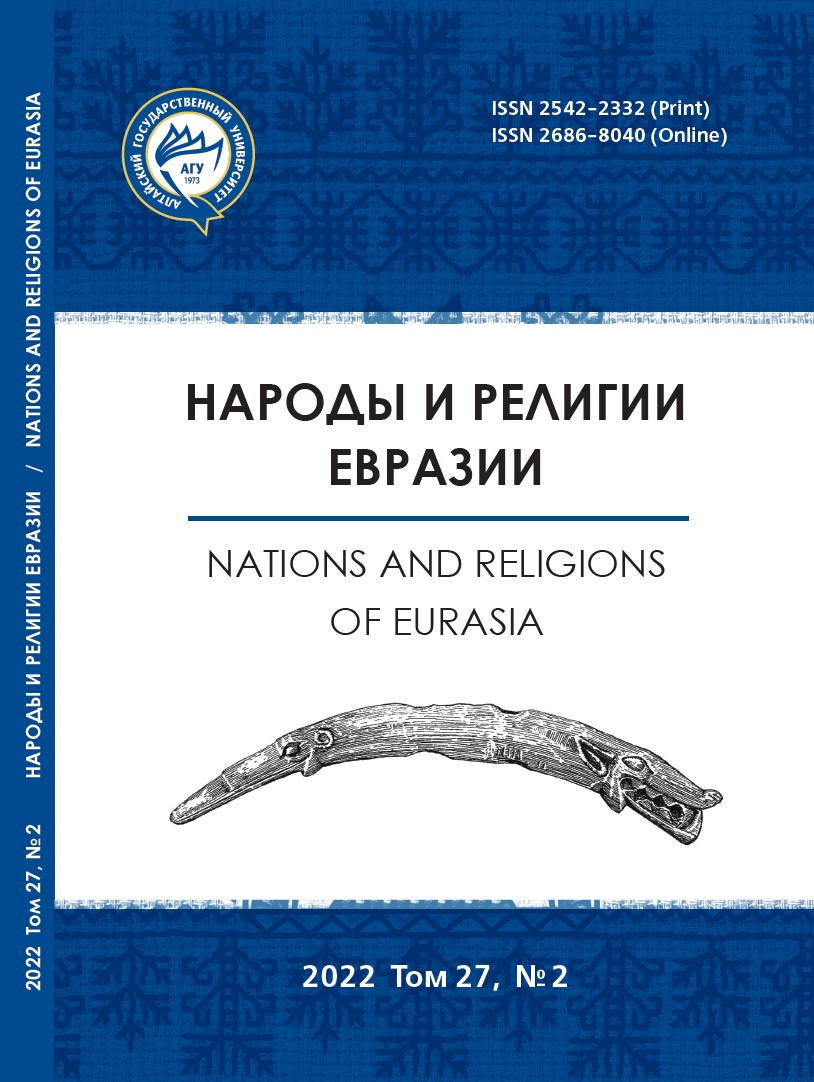About some elements of the temples of Central Asia
Main Article Content
Abstract
Studies conducted at the Kyrkhujra archeological site located in the Namangan region, as well as at the Hantepe site in the Kashkadarya region of the Republic of Uzbekistan in recent years have provided new information about the construction culture of religious buildings in Central Asia. The study of these religious buildings has given new materials on the history of the construction of temples. In particular, studies have shown that a number of elements observed in the temples of Kyrkjura and Hantepa were partially repeated in some religious architectural complexes of Central Asia. One of them is the high platforms that can be traced in the city temples of Penjikent, Yerkurgan, Paykend, Jartepe, Rabinjan and the temples of Jartepe, Aktepe Chilanzar, Hantepe, located outside the major cities. If the platform of the ancient Yerkurgan temple is built of mudbricks, then the platforms of the temples of Hantepe, Paykend and Penjikent are made of pakhsa — beaten (pressed) clay. The next important detail of the temples is the storage for ash, which was also opened in many temples of Central Asia. In particular, in the temples of Yerkurgan, Paykend, Penjikent and Hantepa. If the ash storage facilities of the Kirkhujra temple allowed us to observe the most ancient forms of such structures, then the ash storage facilities of the Hantepa temple showed their development.
Downloads
Metrics
Article Details

This work is licensed under a Creative Commons Attribution 4.0 International License.
References
Анарбаев А. А., Баратов С. Р., Саидов М., Кубаев С., Насриддинов Ш. Археологические исследования городища Чильхуджра в 2013 году // Археологические исследовании в Узбекистане 2013-2014 года. Самарканд : Институт археологии АН РУз. 2016. Вып. 10. С. 23-36.
Аскаров А. А., Раскопки Пшактепе на юге Узбекистана // История материальной культуры Узбекистана. Вып. 17. Ташкент : Фан, 1982. С. 30-40.
Бойс М. Зароастрийцы. Верования и обычаи. М. : Наука, 1987. 304 с.
Геродот. История в девяти книгах / пер. и прим. Г. А. Стратановского. Л. : Наука, 1972. 600 с.
Дорошенко А. Р. Зороастрийцы в Иране (Историко-этнографический очерк). М. : Наука, 1982. 233 с.
Кубаев С. Ш. Трипод из памятника Хантепа // Вестник археологии, антропологии и этнографии. № 2 (41) 2018. Тюмень : ФИЦ ТюмНЦ СО РАН, 2018. С. 81-85.
Страбон. География в 17 книгах / пер. и прим. Г. А. Стратановского. Л. : Наука, 1964. 957 с.
Сулейманов Р. Х. Древний Нахшаб. Ташкент : Фан, 2000. 443 с;
Шкода В. Г. Пенджикентские храмы и проблемы религии Согда (V-VIII века). СПб. : Изд-во Гос. Эрмитажа, 2009. 280 с.;
Harriet Crawford, Sumer and the Sumerians, Cambridge: Cambridge University Press, 1991. (New York 1993). 234 p. (in English)
Martin Sauvage, La construction des ziggurats sous la troisième dynastie d'Ur // IRAQ. The British Institute for the Study of Iraq. Volume 60. 1998. P.45-63 (in French).
Martin Sauvage, La gestion de la construction publique sous la Troisième dynastie d'Ur // dans C. Michel (éd.), De la maison à la ville dans l'Orient ancien: bâtiments publics et lieux de pouvoir, Nanterre, MAE, 2015 (Thème VIII, Cahiers des thèmes transversaux d'ArScAn, vol. XII, 2013-2014). P. 103-115 (in French).
Vance Tiede. Ziggurats: An Astro-Archaeological Analysis // Harmony and Symmetry: Celestial regularities shaping human culture, Proceedings of the SEAC 2018. Conference in Graz (in English).

